The last months of 2015 have been exceptional for spotted eagles (sensu lato) in the Strait of Gibraltar. Over 10 putative Lesser Spotted Eagles Aquila pomarina (LSE) have been recorded from the 25th August, when Victor Estrada photographed in Tarifa the first bird of the autumn, to the 17th of November when we photographed a juvenile. Remarkably, 4-5 different individuals where observed in a two days lapse, between the 23rd and 25th of September. This is probably the largest presence of LSE ever recorded in Spain, where the species is considered a rarity with only 7 records officially accepted by the national committee of rare birds up to 2013 (J.L. Copéte in Litt.)
The plate below compiles nine records of different putative LSE photographed in the Strait of Gibraltar during the autumn of 2015. None of these records have been reviewed by the rare birds committee yet. As far as we know, 3 to 5 additional possible records took place over the same period.
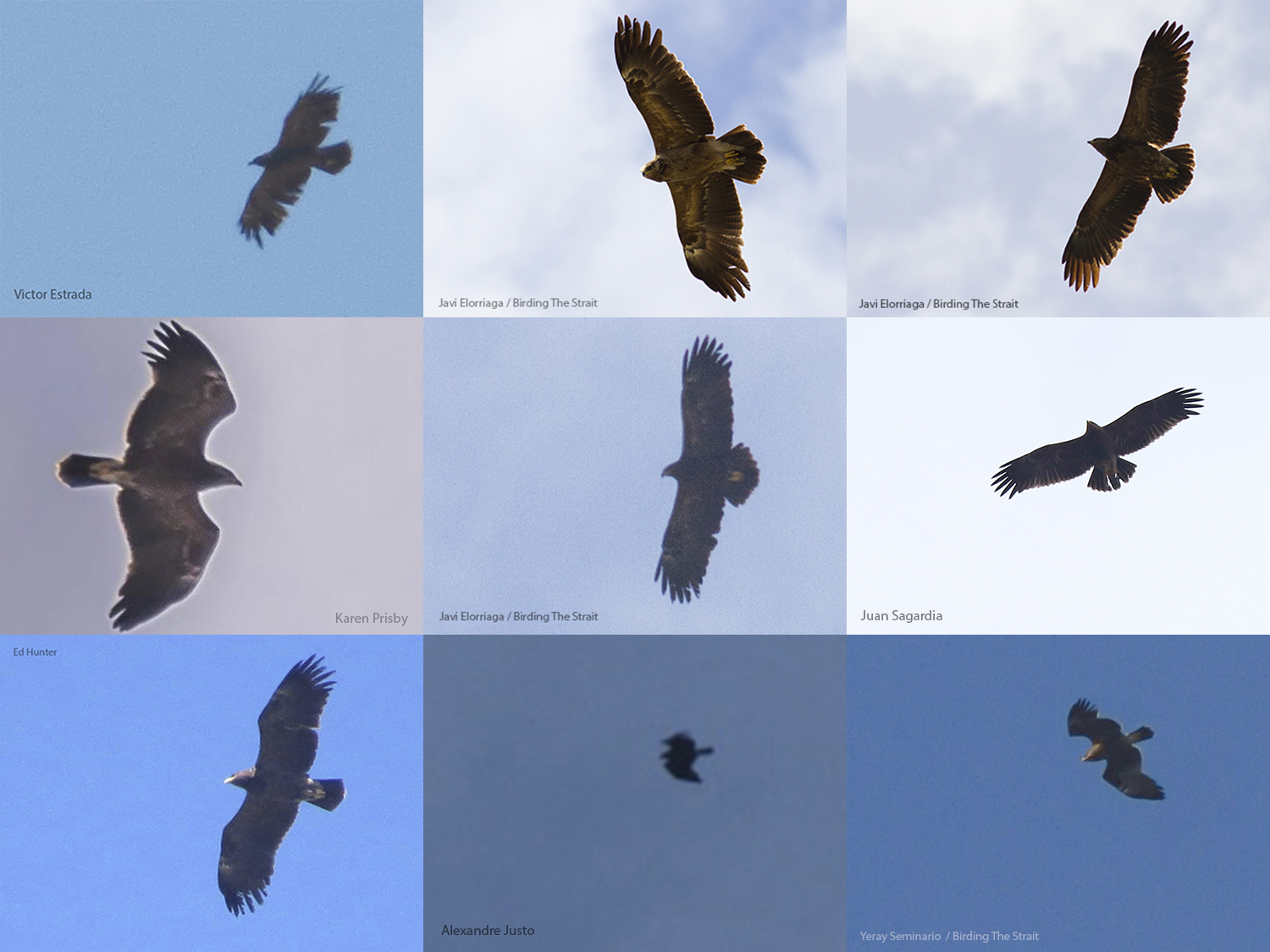
*Update: Carlos Torralvo/F.Migres photographed an adult LSE on the 10th of October in Algeciras, which together with the juv seen in Cazalla, makes the second Eagle of the day.
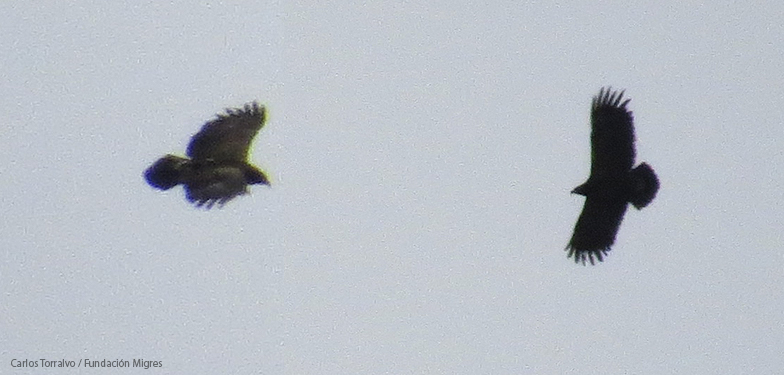
In general terms, all these records fit well within the “minor migration route across the Iberian Peninsula” scenario described here for the LSE. However, there is an additional series of records that deserve special attention. These involve three presumed hybrids (or backcrosses) between LSE and Greater Spotted Eagle Aquila clanga (GSE), including a satellite tracked juvenile from Lithuania.
To put these records into perspective we recommend reading this paper, where the widespread hybridization between the two spotted eagle species in Europe is highlighted by means of microsatellite genetic analysis.
• On 29th October, Jose Mari Niebla photographed a striking juvenile in La Janda. As far as we know, this individual was not seen again until 20th December, when we got excellent views of it in the same area. Therefore, this individuals seems to be a wintering bird probably wandering over a large range, which complicated relocating it.

From a phenological point of view, the dates when this individual was observed fit better with a short-distance migrant (GSE) rather than with a long-distance migrant (LSE), which by late December should be south of the Sahara.
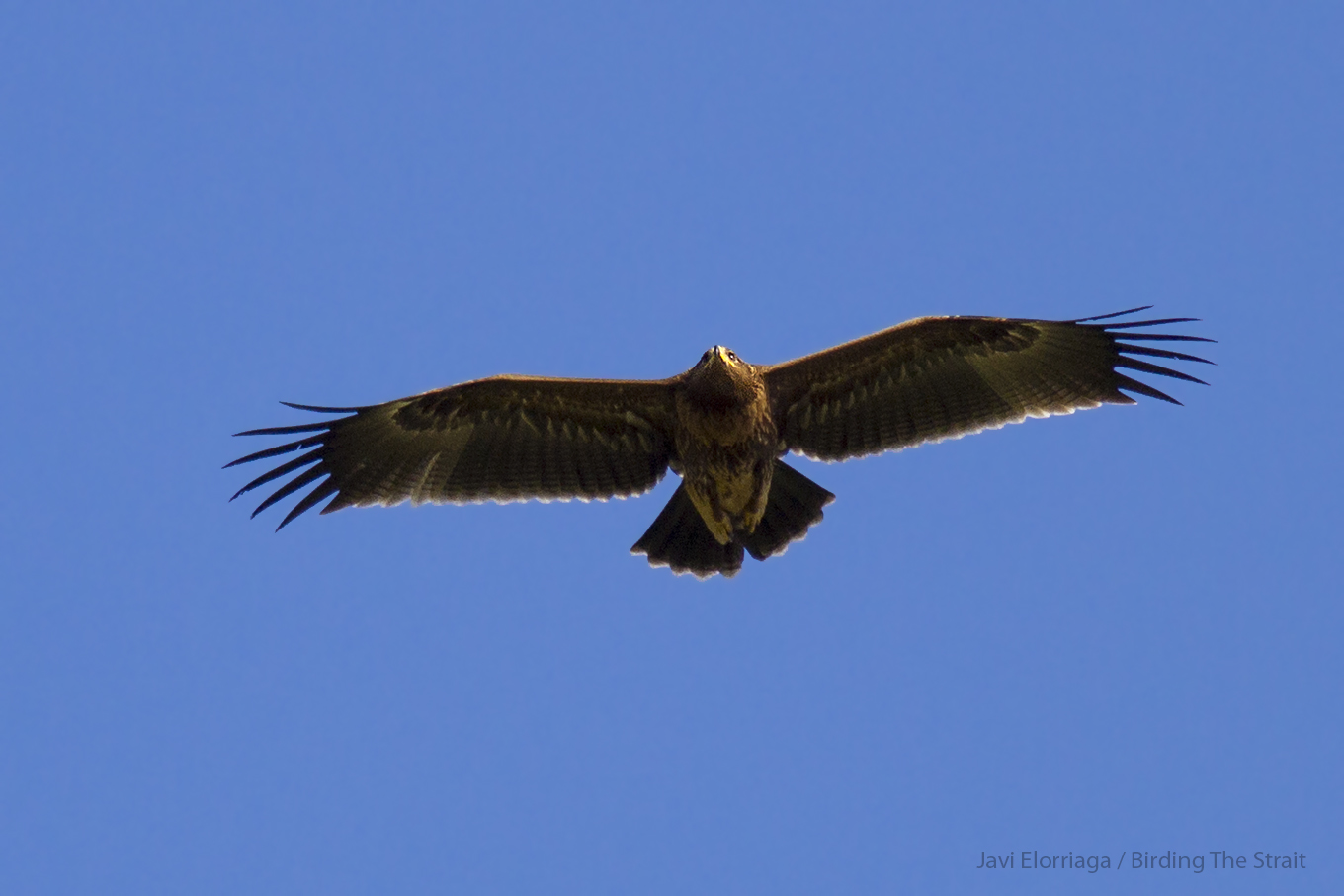
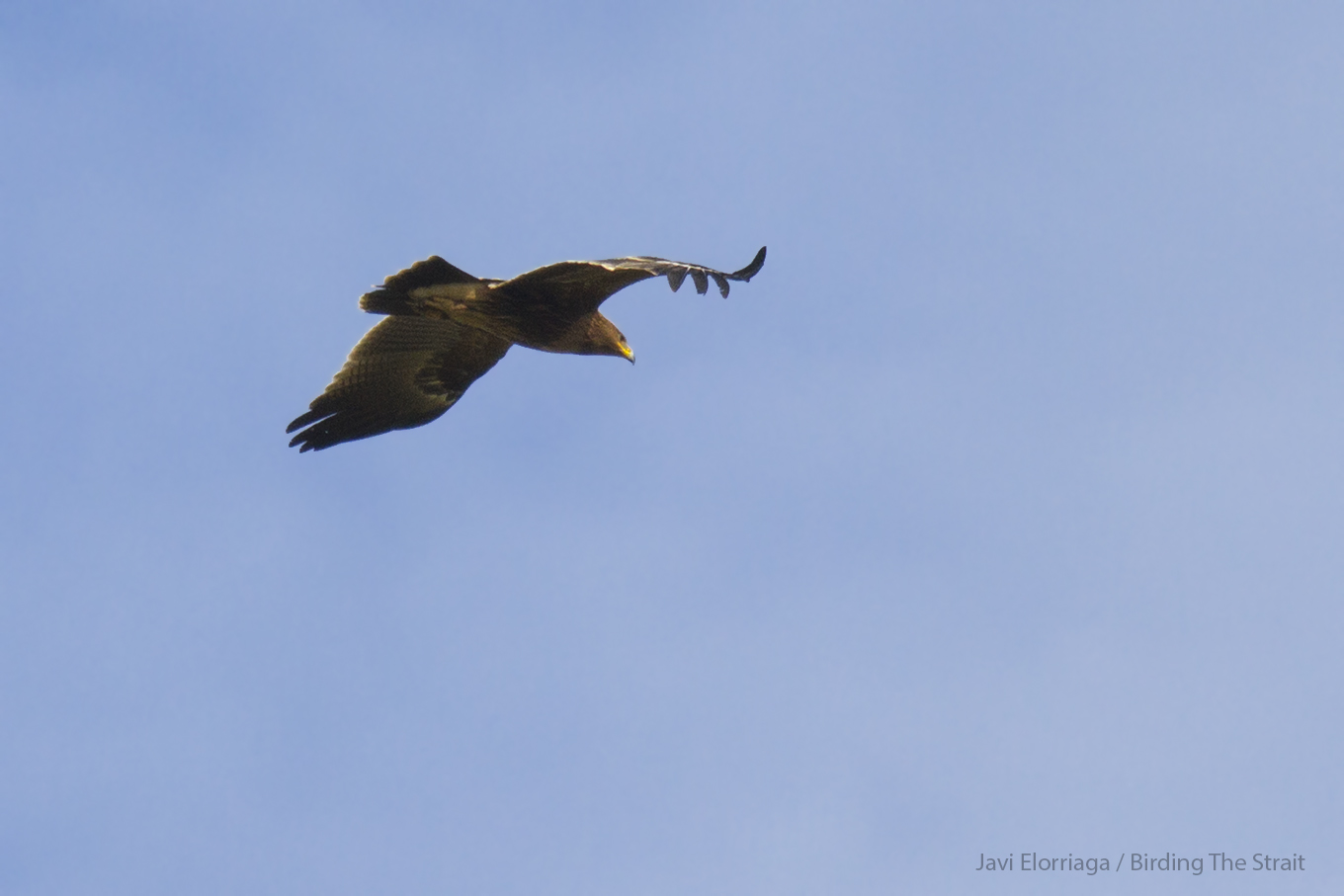
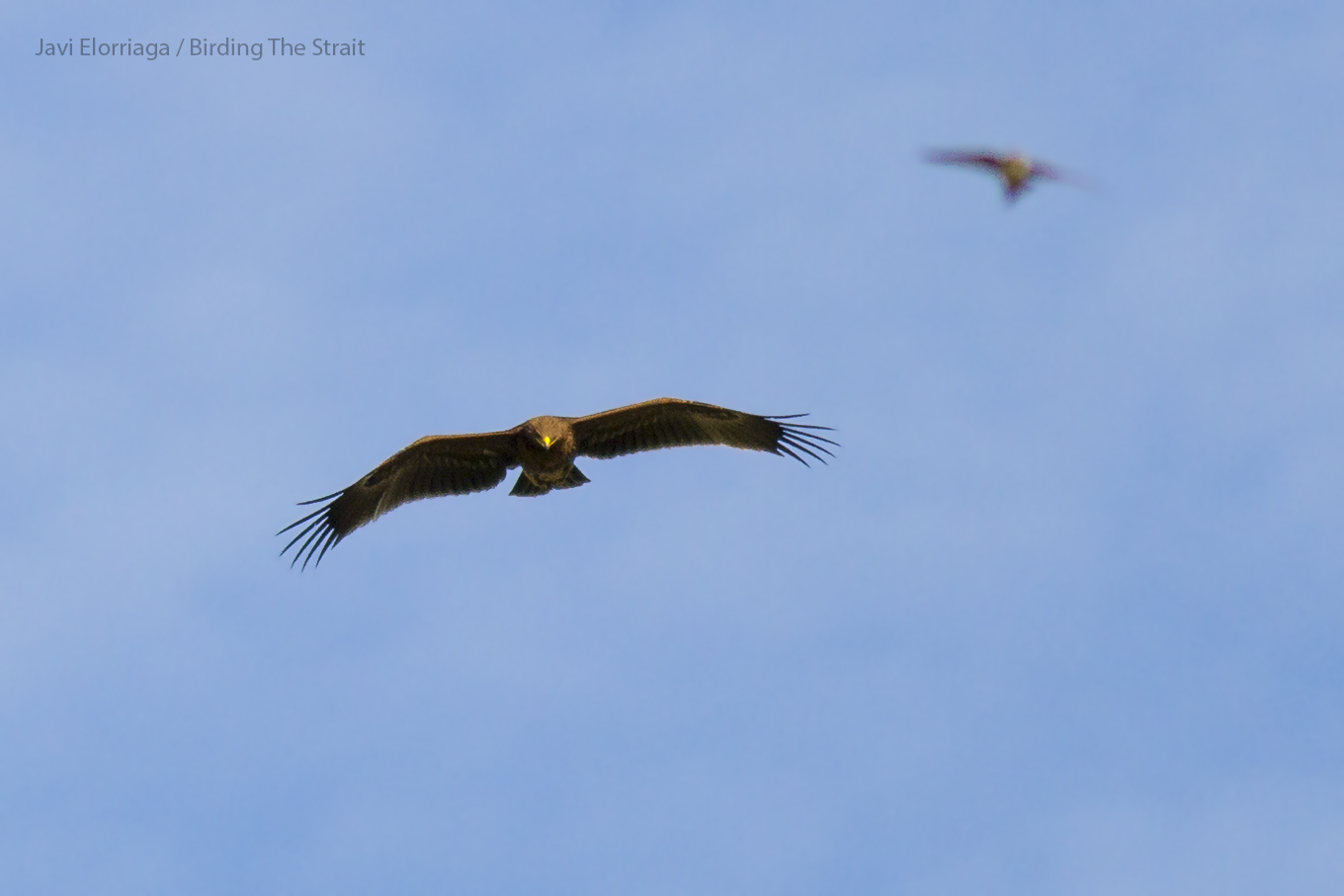
There is a general consensus on the mixed origin of this individual among the many fellows that have kindly shared their thoughts. Apparently, most plumage and structural features correspond to GSE, although the barring of the remiges suggests certain degree of LSE influence. For those interested in going deeper into the field identification hints we eagerly recommend reading Dick Forsman´s blog and Jan Lontkowski and Grzegorz Maciorowski paper in Dutch Birding.
• Between the 14th of October and the 24th of November, a hybrid LSE x GSE satellite tracked from its nest in Lithuania wandered around La Janda and beyond. The complete migration route of this individual can be tracked with outstanding detail in Movebank. Ornitela website provides very interesting additional information, including pictures of the nestling and its near fatal collision with a wind turbine in Cádiz (a must read!). The map below shows the migration route of this juvenile hybrid eagle (in red) and another juvenile raised by the same mixed pair in 2014 (in blue).
The original source and further information can be found in http://www.ornitela.com/
This eagle reached Spain on the 8th of October, crossing the Eastern Pyrenees in Lérida over the Montescurbas mountain pass (2445m) and reached the Strait of Gibraltar 6 days later, where it settled. On the 23rd of October Todor Todorov photographed it in La Janda putting all of us on the track. Despite an evident preference for La Janda region, the bird showed a high mobility, including a visit to Huelva and a long detour to Valencia between 12-20th of November. On the 21st of November it was back in La Janda and Ricky Owen got to photograph it one day later.
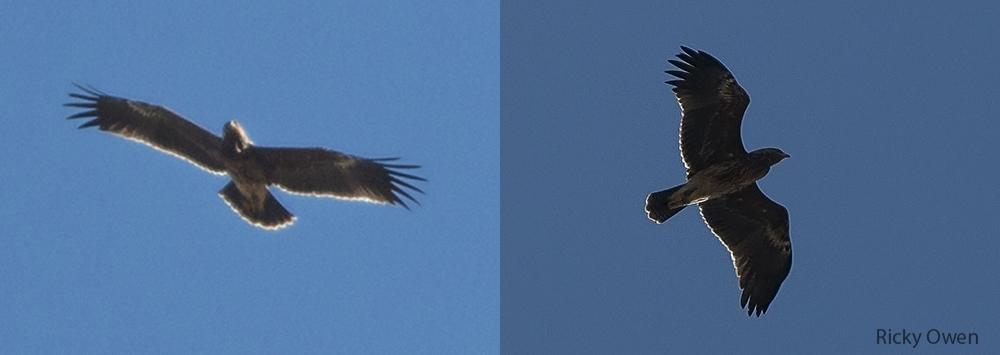
On the 24th of November the eagle resumed its southbound migration and crossed the Strait of Gibraltar to Morocco. Remarkably, the eagle sea-crossed the Strait Of Gibraltar exactly at its narrowest part (i.e. 14,5 km), departing from Europe at 1.500 m.a.s.l. and reaching the African continent at 400 m,a,s,l. in less than 20 minutes.
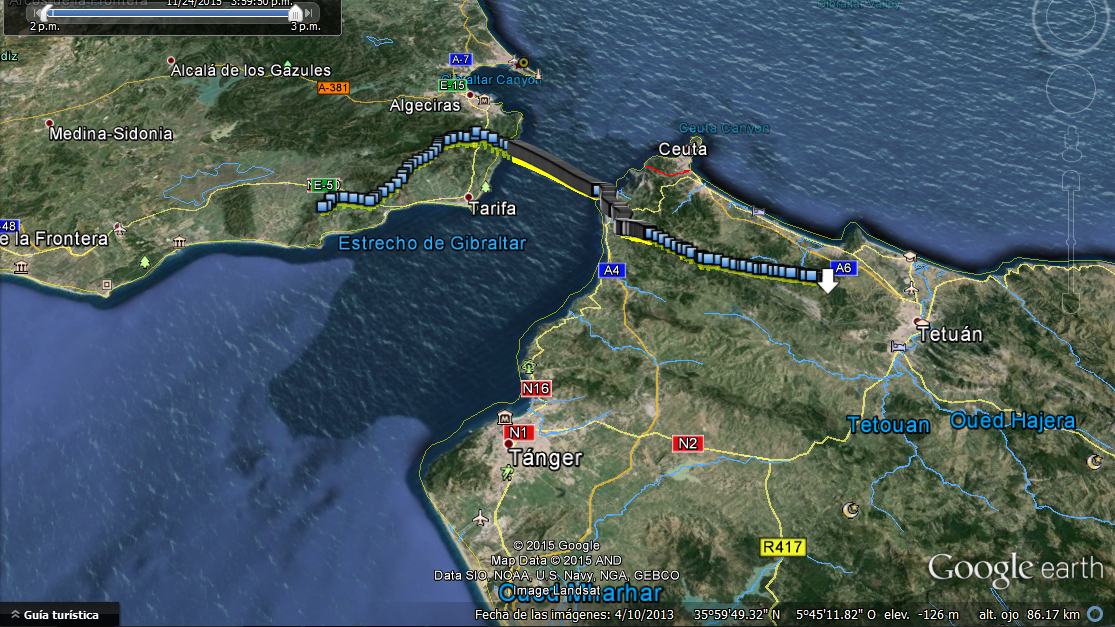
By the time of writing this eagle was overwintering in southern Senegal, thus behaving as a long-distance migrant!
• On 26th November, Jose Mari Salazar photographed an non-juvenile spotted eagle in La Janda. Even though the available pictures do not allow a detailed study, this eagle shows a combination of characters pointing again to mixed genes: chiefly resemble LSE, the barring of the remiges looks dense and covers the entire length of the feather (pro LSE) while the 7th finger (primary 4) is notably long (pro GSE). Phenology, again, points to GSE or a hybrid.

This might well be the same non-juvenile observed in the same area 2 days later by several birders (R.Campos, F. Jimenez, Sarry, Marcel and others). In any case, the hybrid hypothesis can not be proved and any comments on the identification of this individual are welcome.
*Update:
This individual was relocated on the 16th of January and individualized after its body markings . Notice how both 7th primaries have reached their full lenght, while on the 26th of November they were still half grown, and the moult seems to be arrested. This way, the overwintering of this individual in La Janda is proved. The new pictures reinforce the mixed genes idea: overall LSE appearance with striking dark iris (pro GSE) instead of pale yellow as expected in a normal LSE at this age-class (probably a third Winter individual). However, the significant prevalence of LSE traits likely indicate this is not a F1 hybrid but a succesive backcross on which the GSE influence is rather “diluted”.
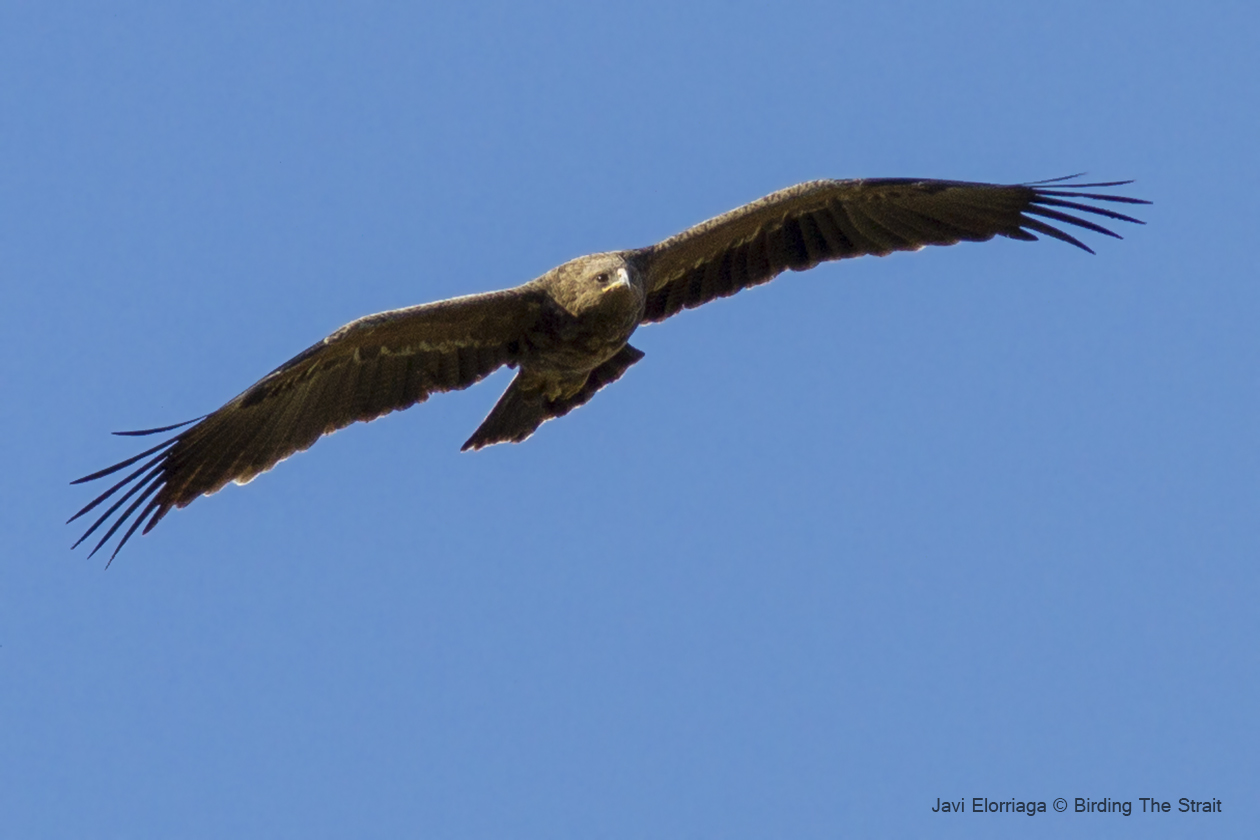
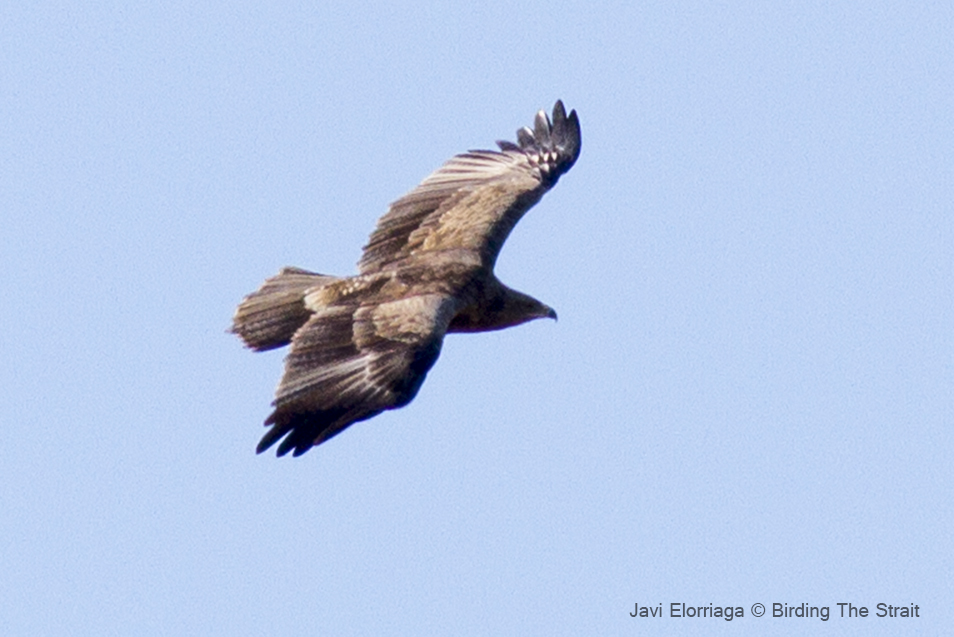
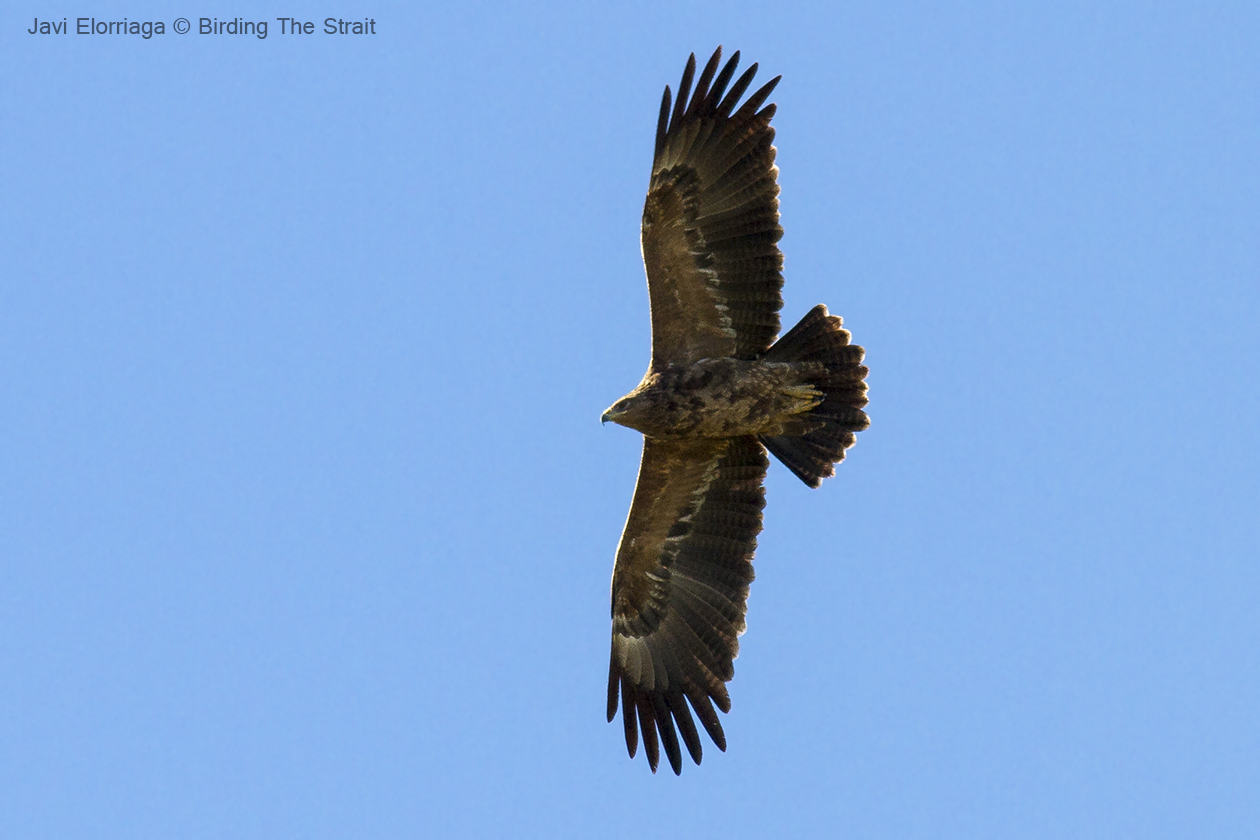
*Update:
On the 5th of January 2016 Gonzalo Gil Marqués photographed a putative adult LSE in La Janda. Its individual markings ( i.e. worn primary tips) evidence it is a diffenent bird regarding those seen before in the area. The day after, it was relocated by Jose María Zapata, Sarry and Javi Elorriaga. Prolonged observation and better pictures unveiled some subtle GSE traits such as dark iris (should be notably pale yellowish in an average pomarina) and clanga-like bill/head structure. Remarkably, this individual is very similar in all characters to the one seen on the 26 of November by J.M. Salazar.
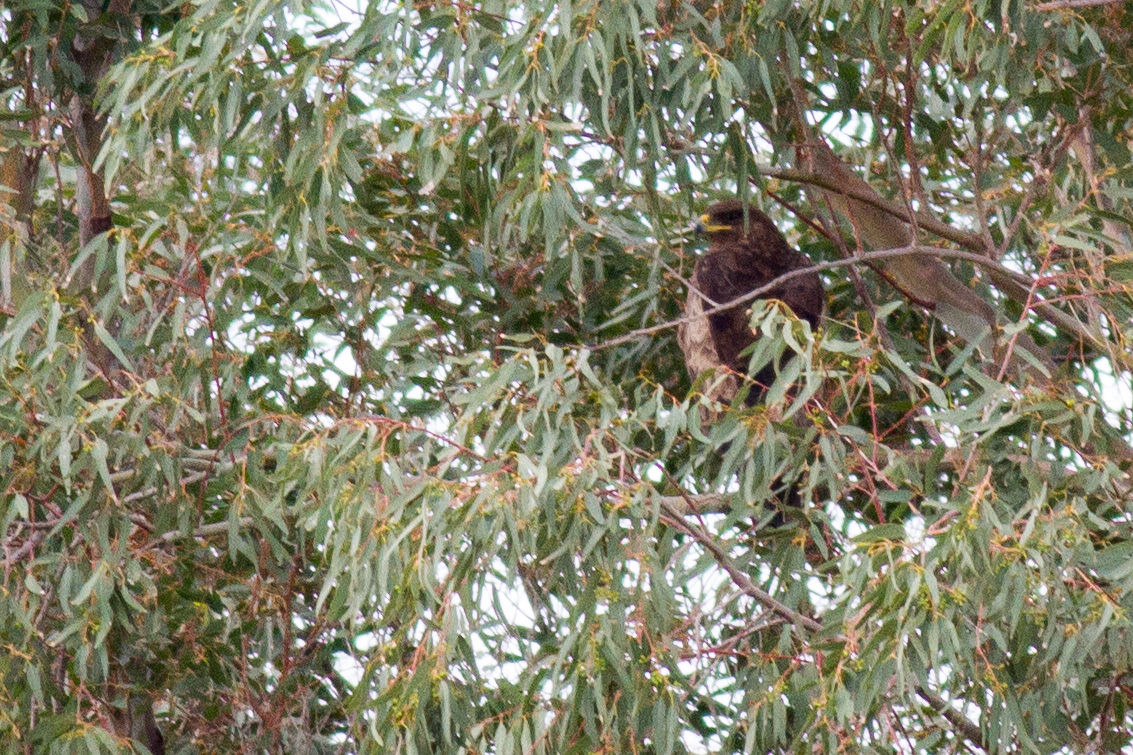
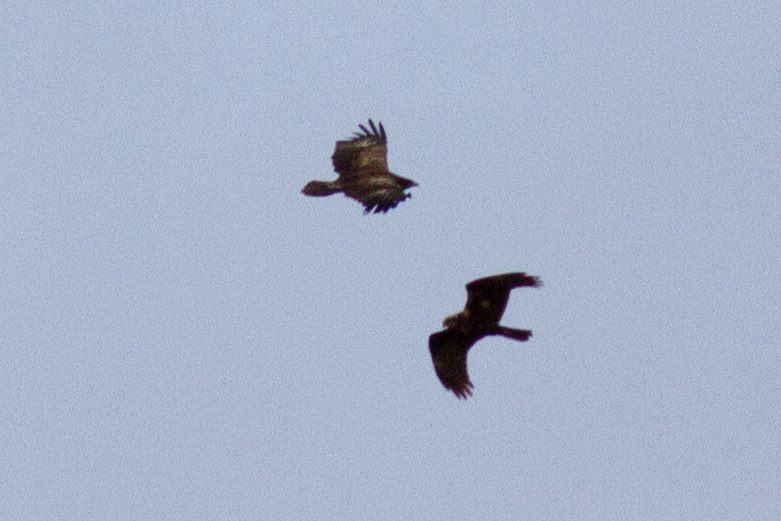
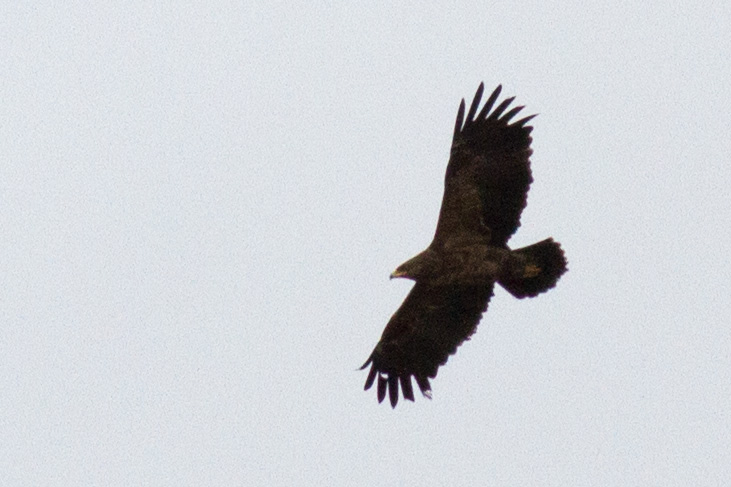
*Update:This individual (recognized after the broken tips of the primaries in the right wing) was relocated in the same area of La Janda on the 24th and 31st of January and 1st February 2016, thus confirming its overwintering.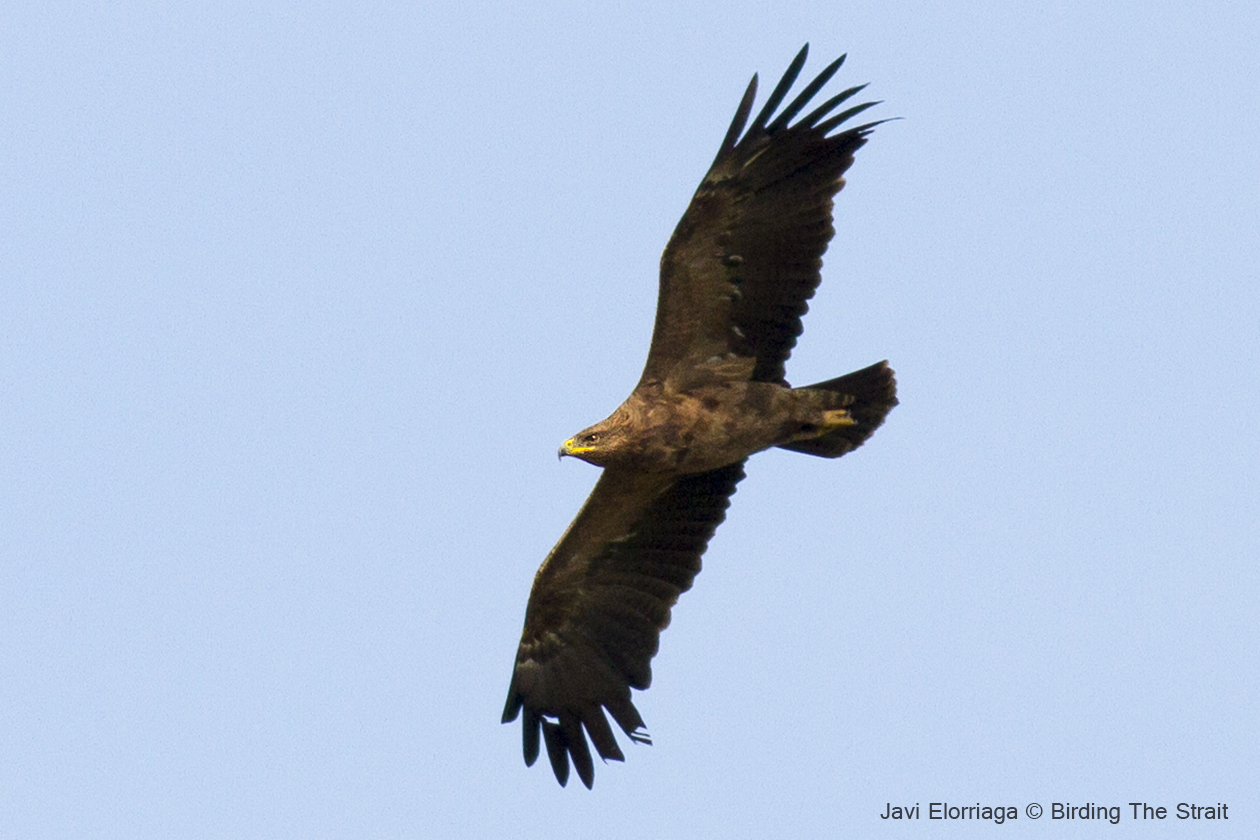
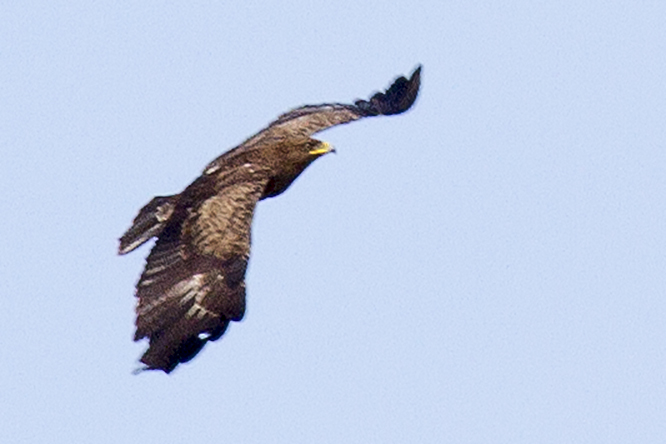
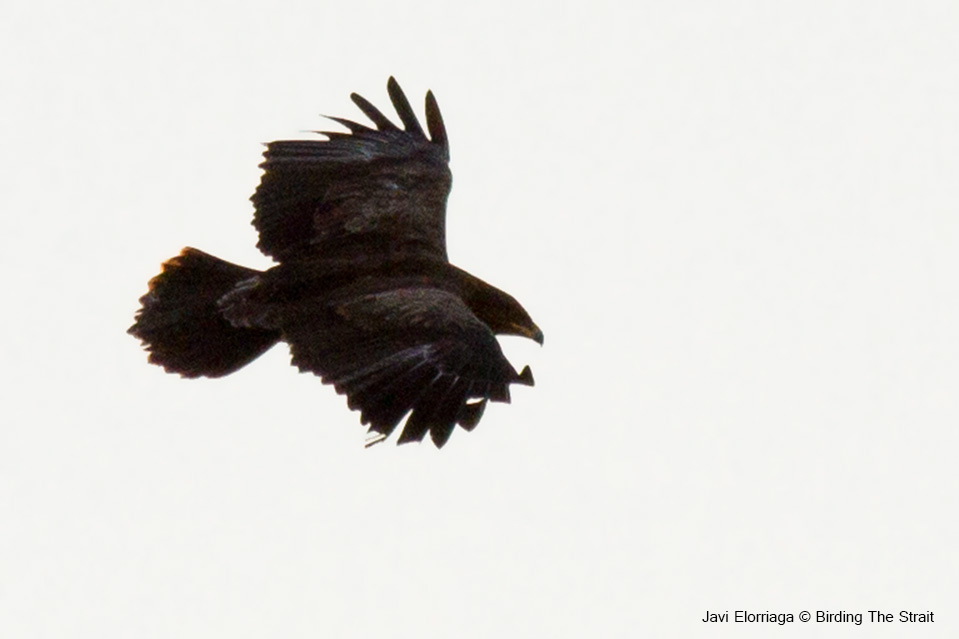
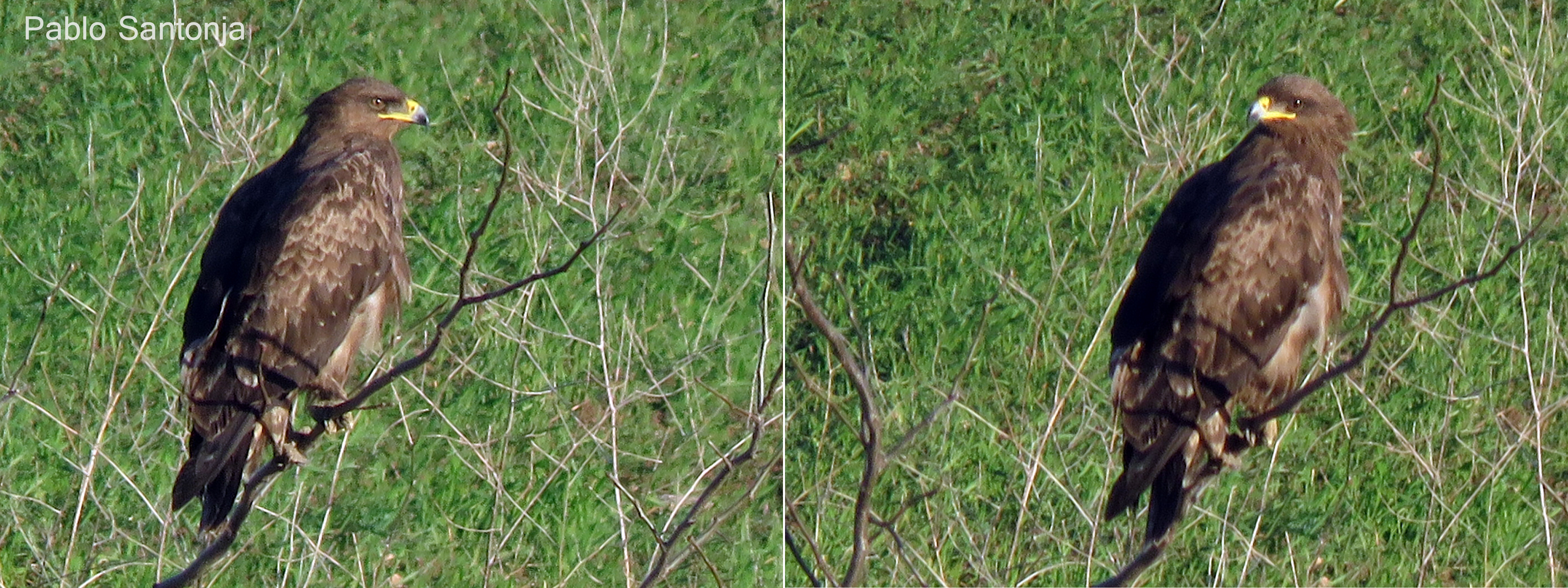
These last two individuals show an evident preference for foraging over extense cropland and the wetland ecosystems created by the flooded rice paddies in La Janda. The learn more about the winter hábitat selection of the LSE and the GSE read this and this articles, respectively.
*Update: On the 20th of January, Richard Page-Jones, photographed an striking juvenile in La Janda. As far as the available picture show it looks like a GSE. However, it is posible that this is the same juvenile individual referred before, first seen on the 29th October by Jose Mari Niebla.
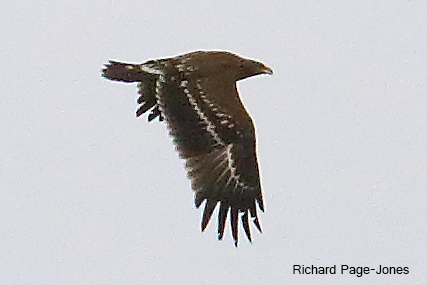
All in all, the new records of LSE on migration in the strait of Gibraltar are in line with the probably increased migration of the species on the south-western flyway suggested by different authors. According to the existing information, a significant amount of the spotted eagles observed here (and elsewhere in the Iberian Peninsula) seem to be hybrids or backcrosses between LSE and GSE. This seems especially true when it comes to late records in autumn and winter. In addition to this, the strait of Gibraltar, and especially La Janda region, is holding a reduced number of overwintering individuals over the last years. The available information about the winter presence of spotted eagles in the area is still very scarce and requires further attention while the eventual presence of putative GSE seems equally possible.
Acknowledgements: Thanks to all fellow birders who shared their records and photos with us. We are particularly grateful to Mindaugas Dagys, Rimgaudas Treynis and Ornitela (Ornithology and Telemetry Applications) for kindly sharing high quality information on the Lithuanian hybrid and its satellite tracked migration. Dick Forsman and Jan Lontkowski have kindly shared their expertise on this subject and thoughts on the individuals ID.